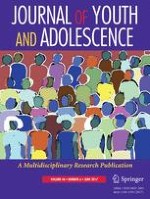12-09-2016 | Empirical Research
Body Dissatisfaction in Early Adolescence: The Coactive Roles of Cognitive and Sociocultural Factors
Gepubliceerd in: Journal of Youth and Adolescence | Uitgave 6/2017
Log in om toegang te krijgenAbstract
The sociocultural influences of the media, friends, and family on body dissatisfaction in young girls are well documented, yet further increasing our comprehension of the coaction of cognitive processes with sociocultural factors is crucial to understanding the dynamic emergence of body dissatisfaction in early adolescence. The current study examined the roles of appearance related messages and expectations from friends and family and selective attention biases in the development of body dissatisfaction. An ethnically and racially diverse sample of girls (72 % Hispanic White, 17.8 % African-American, 8.5 % non-Hispanic White, and 1.7 % Asian-American) between the ages of 9 and 13 (N = 118) completed multiple measures of attention, sociocultural attitudes toward weight and shape, and body dissatisfaction. The data from these measures were examined using path analysis. The final model fit well, and demonstrated the coactive effect of selective attention and sociocultural factors on body dissatisfaction. These findings will be instrumental in designing future body dissatisfaction intervention and prevention programs that incorporate cognitive factors, augmenting the existing sociocultural and psycho-educational frameworks.
